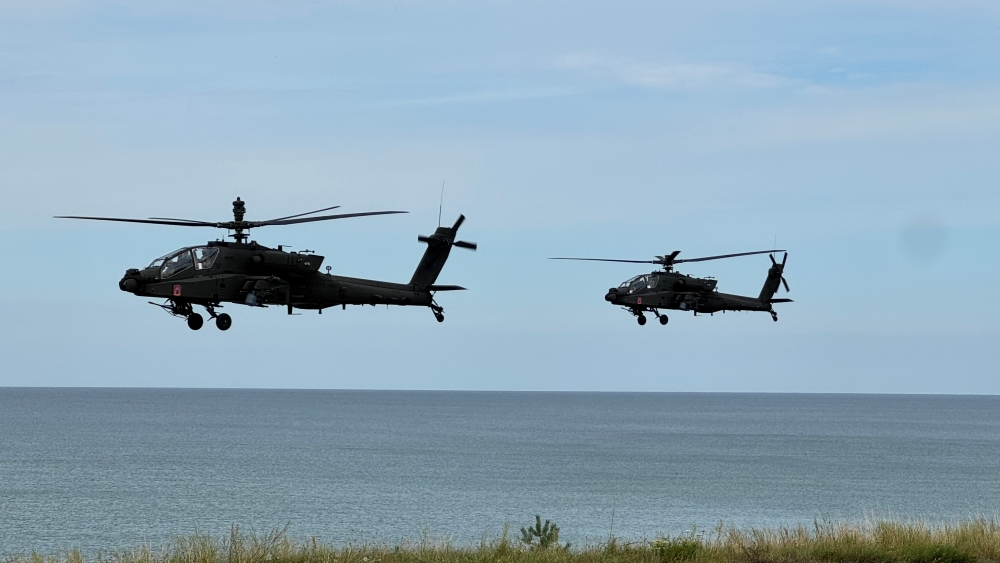
The successful live-fire campaign of Rafael's SPIKE NLOS missile system from US Army APACHE helicopters at Poland's Ustka range signals a transformative enhancement for Poland's upcoming AH-64E fleet.
Poland is procuring 96 AH-64E APACHE GUARDIAN helicopters under the $10 billion KRUK (RAVEN) programme. The requirement stems from Poland's geographic position on NATO's eastern flank, necessitating enhanced anti-armour and precision strike capabilities against potential threats from Russia and Belarus. With deliveries scheduled from 2028 to 2032, Poland will become the world's second-largest APACHE operator after the United States.
The Polish requirement specifically emphasizes long-range precision engagement, reconnaissance capabilities, and integration with broader NATO systems. The helicopters will be based at strategic locations including Inowroclaw, Malbork, and Swidnik, positioning them optimally for rapid response across Poland's frontiers.
Unlike conventional helicopter-launched missiles, SPIKE NLOS extends engagement ranges to up to 50 kilometres when launched from aerial platforms, compared to 32 kilometres from ground-based systems. This dramatic range extension allows APACHE crews to engage high-value targets from well beyond enemy close air defence zones. The missile's sophisticated electro-optical seeker provides real-time video feedback to operators, enabling target verification, retargeting, and mission abort capabilities mid-flight. Three warhead variants accommodate diverse mission requirements: High Explosive Anti-Tank (HEAT) for armoured targets, fragmentation for soft targets and personnel, and Penetrating Blast-Fragmentation (PBF) for hardened structures.
Traditional APACHE armament, including the AGM-114 Hellfire missile with its 6.5-kilometer range, limits crews to relatively close engagements. SPIKE NLOS multiplies this capability by nearly eight times, fundamentally altering tactical employment options.
The missile's non-line-of-sight capability enables engagement of targets beyond terrain features, buildings, or other obstructions that would mask conventional weapons. This proves particularly valuable in Poland's diverse terrain, from the Baltic coastal plains to the Carpathian foothills. The system's GPS-independent navigation and encrypted bi-directional data link ensure reliable operation even in contested electromagnetic environments.
For Poland, SPIKE NLOS integration signals a doctrinal shift toward multi-domain operations. The recent demonstration at Ustka, where missiles successfully engaged maritime targets at 26 kilometres, showcases the system's versatility across land and sea domains. This capability proves particularly relevant given Poland's extensive Baltic coastline and the increasing importance of maritime security in regional defence planning. The presence of observers from 10 allied nations during the Ustka demonstration underscores the broader NATO interest in these enhanced capabilities.
The SPIKE NLOS integration positions Poland's future APACHE fleet as a premier long-range precision strike force, capable of conducting independent operations or supporting broader coalition efforts. Combined with Poland's concurrent acquisition of F-35A Lightning II aircraft, M1A2 Abrams tanks, and other advanced systems, the enhanced APACHEs form part of an integrated, network-centric defence architecture designed to deter aggression and defend allied territory. This capability enhancement arrives at a critical juncture, as regional security challenges demand both extended reach and precise effects. The successful integration ensures Poland's APACHE investment remains relevant throughout the aircraft's operational lifetime extending into the 2060s.








.png)
